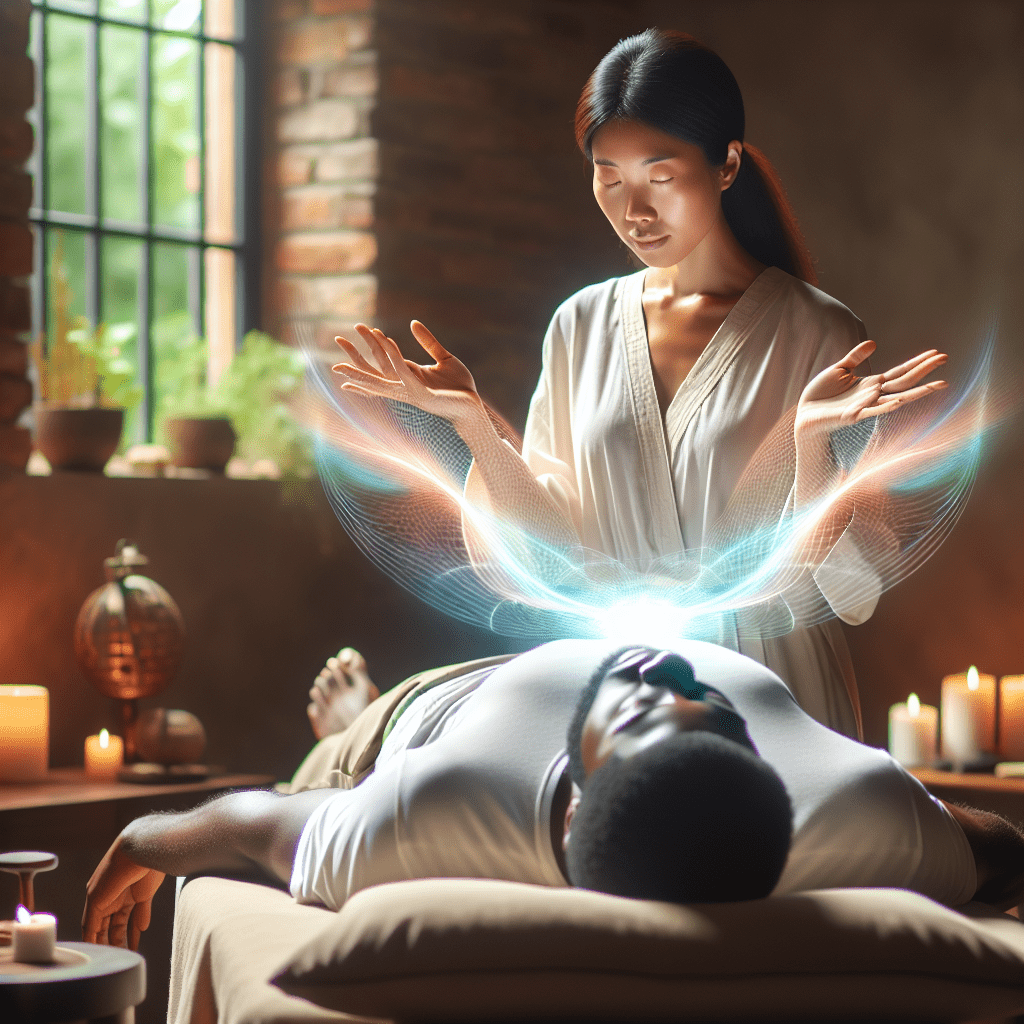In our fast-paced, technology-driven world, more and more people are turning to ancient wisdom for solutions to modern problems. Self healing techniques that have stood the test of time are experiencing a remarkable resurgence among health-conscious individuals seeking alternatives to conventional approaches. Eastern healing practices, in particular, have been revered for thousands of years for their remarkable ability to restore balance between mind and body – a harmony that many of us desperately need in today’s hectic lifestyles.
These time-tested self healing techniques offer something that modern medicine sometimes overlooks: a holistic approach that addresses not just physical symptoms but emotional and spiritual wellbeing too. From the serene temples of ancient China to the spiritual centers of India, these practices have evolved over centuries, refined by generations of healers who understood the profound connection between our thoughts, emotions, and physical health.
What makes these self healing techniques particularly relevant today is their accessibility. You don’t need expensive equipment or specialized training to begin incorporating many of these practices into your daily routine. Whether you have five minutes or an hour, there’s an Eastern healing practice that can fit into your schedule and transform your wellbeing from the inside out.
Meditation: The Foundation of Self Healing
Among all self healing techniques, meditation stands as perhaps the most fundamental. This ancient practice, which has roots in multiple Eastern traditions, is now backed by substantial scientific research confirming its numerous benefits. Regular meditation has been shown to reduce stress hormones, lower blood pressure, and even change brain structure in ways that enhance emotional regulation and focus.
“Meditation is not about becoming a different person, a new person, or even a better person,” explains Dr. Jon Kabat-Zinn, founder of Mindfulness-Based Stress Reduction. “It’s about developing awareness and learning to live with greater ease and compassion.“
For beginners, guided imagery can be an accessible entry point into meditation. This self healing technique involves visualizing peaceful scenes or positive outcomes while in a relaxed state. Try imagining yourself in a serene natural setting, feeling completely at peace, with each breath deepening your relaxation.
Mindfulness meditation, another powerful approach, focuses on bringing attention to the present moment without judgment. This practice can be as simple as focusing on your breath for five minutes each morning, gently bringing your attention back whenever your mind wanders. The beauty of mindfulness is that it can be practiced anywhere – while washing dishes, walking to work, or even during a challenging conversation.
Emotional Release Through Journaling
While Eastern traditions often emphasize meditation, they also recognize the importance of processing emotions – something that modern journaling practices address beautifully. Journaling as a self healing technique helps create space between our thoughts and emotions, allowing us to observe patterns and gain insights that might otherwise remain hidden.
Studies show that expressive writing can help reduce symptoms of depression and anxiety while improving working memory. This happens because writing helps us process difficult experiences and emotions in a structured way.
To begin this powerful self healing technique, set aside just 10-15 minutes each day to write freely without censoring yourself. Consider prompts like: “What am I feeling in my body right now?” or “What situation is troubling me most today?” The goal isn’t to produce beautiful prose but to create a dialogue with yourself that promotes understanding and healing.
Movement as Medicine: Tai Chi and Qigong
Eastern healing traditions have long understood that physical movement is essential for mental wellbeing – a connection that modern science now confirms through research on exercise and endorphin release.
Two ancient practices stand out for their exceptional ability to unite physical movement with mindful awareness: Tai Chi and Qigong. These gentle, flowing exercises originate from China and emphasize the cultivation of “qi” or life energy.
“Tai Chi is often described as ‘meditation in motion,’” says master practitioner Wei Chen. “Every movement is performed with intention and awareness, creating harmony between mind and body.“
Research shows that regular practice of these self healing techniques can reduce chronic pain, improve balance and flexibility, and even boost immune function. One study found that older adults who practiced Tai Chi three times weekly for 12 weeks experienced significant improvements in mood and sleep quality.
Unlike high-intensity workouts that can sometimes deplete energy, these Eastern movement practices leave practitioners feeling energized and centered. The slow, deliberate movements make them accessible to people of all ages and fitness levels.
Cognitive Restructuring: Transforming Negative Thought Patterns
Eastern philosophical traditions like Buddhism have long emphasized the power of our thoughts to shape our reality – a concept that modern cognitive therapy has embraced. Cognitive restructuring involves identifying and challenging negative thought patterns that contribute to emotional distress.
This self healing technique begins with awareness. When you notice a negative thought arise, pause and ask yourself: “Is this thought absolutely true? Am I seeing the whole picture? What would a compassionate friend say about this situation?“
For example, if you catch yourself thinking “I always mess things up,” you might challenge this by recalling instances where you succeeded or by reframing it as “Sometimes I make mistakes, just like everyone else.”
Eastern wisdom reminds us that our thoughts are not facts but rather temporary experiences passing through our awareness. By observing them with gentle curiosity rather than identification, we can gradually transform our mental landscape.
The Art of Boundary Setting
While not always explicitly discussed in ancient texts, the practice of setting healthy boundaries aligns perfectly with Eastern concepts of energy management and self-respect. Many Eastern healing traditions view personal energy as precious and finite – something to be protected and directed wisely.
Setting boundaries is an essential self healing technique in our hyperconnected world, where demands on our attention and energy can feel relentless. Clear boundaries help preserve mental wellbeing by preventing energy depletion and resentment.
Start by identifying areas in your life where you feel drained or resentful. These feelings often signal boundary issues. Practice simple, direct statements like “I’m not available at that time” or “I need to take some time for myself today.” Remember that setting boundaries isn’t selfish – it’s necessary for sustainable giving and participation in relationships.
Sleep Rituals for Restoration
Eastern healing systems have always recognized sleep as essential for health and healing. Traditional Chinese Medicine, for instance, maps specific times of night to different organ systems, emphasizing the importance of quality rest for physical restoration.
Modern sleep science confirms what ancient healers knew intuitively: sleep is when our bodies repair cellular damage, consolidate memories, and restore energy. Without adequate sleep, our self healing mechanisms cannot function optimally.
To improve sleep quality using Eastern-inspired approaches, consider establishing a wind-down ritual that signals to your body that it’s time to transition to rest. This might include:
- Dimming lights an hour before bedtime to stimulate natural melatonin production
- Drinking a small cup of calming herb tea like chamomile or valerian
- Practicing gentle stretching or yin yoga poses to release physical tension
- Using aromatherapy with lavender or sandalwood to promote relaxation
The key is consistency, as your body learns to recognize these cues for sleep preparation.
Sound Healing: Vibrational Medicine for Modern Times
Sound healing represents one of the oldest and most universal self healing techniques, found in virtually every ancient culture. From Tibetan singing bowls to Indian mantras, Eastern traditions have long used sound vibrations to restore harmony within the body and mind.
Modern research validates these practices, showing that specific sound frequencies can alter brainwave patterns, reducing stress and promoting deep relaxation. One study found that sound meditation helped participants reduce tension, anger, fatigue, and depressed mood.
You can incorporate sound healing into your daily routine by:
- Listening to binaural beats designed for relaxation or focus
- Chanting simple mantras like “Om” or humming at a comfortable pitch
- Using singing bowls or tuning forks (or recordings of them) during meditation
- Creating a playlist of nature sounds or instrumental music that promotes calm
“Sound healing works directly with the body’s energy systems,” explains sound therapist Eileen McKusick. “Vibration can help dissolve energy blockages and restore flow to areas that have become stagnant.“
Conscious Breathing: The Bridge Between Mind and Body
Perhaps no self healing technique is more fundamental than conscious breathing. Eastern traditions from yoga to Zen Buddhism place breath awareness at the center of their practices, recognizing it as the bridge between conscious and unconscious processes in the body.
Pranayama, the yogic science of breath control, offers numerous techniques for different purposes – from energizing the body to calming the mind. One simple practice called “4-7-8 breathing” involves inhaling for a count of 4, holding for 7, and exhaling for 8. This pattern activates the parasympathetic nervous system, reducing anxiety within minutes.
Dr. Andrew Weil, who has studied Eastern healing practices extensively, notes: “Breath is the only function that can be both voluntary and involuntary. By consciously controlling the breath, we gain access to systems in the body that are normally automatic.“
Regular practice of conscious breathing techniques can lower blood pressure, improve immune function, and create greater emotional resilience. Best of all, this self healing technique can be practiced anywhere, anytime – making it particularly valuable for managing stress in the midst of daily life.
Somatic Practices for Physical Release
Eastern healing systems have always recognized that emotional experiences leave imprints on the physical body – a concept that modern somatic psychology now embraces. Practices like trigger point release and ideokinesis help release tension held in the body, often releasing emotional energy in the process.
Trigger point release involves applying gentle pressure to tight areas in muscles until the tension begins to dissolve. This self healing technique can be done using your own fingers, a tennis ball, or specialized tools.
Ideokinesis uses imagery to create subtle changes in muscle tone and alignment. For example, imagining your head floating upward like a balloon can release tension in the neck and spine more effectively than direct effort.
“The body keeps the score,” writes trauma specialist Dr. Bessel van der Kolk, echoing what Eastern healing traditions have taught for millennia – that our physical and emotional experiences are inseparably linked.
Integrating Ancient Wisdom into Modern Life
As we’ve explored these ten powerful self healing techniques, a common theme emerges: the wisdom of ancient Eastern healing practices remains profoundly relevant to our modern challenges. What makes these approaches particularly valuable is their holistic nature – addressing the interconnection of mind, body, and spirit rather than treating symptoms in isolation.
At HerbalsZen, we understand this integration deeply. Our approach mirrors the philosophy behind these self healing techniques, blending time-tested Eastern wisdom with modern innovation. Just as EASTCHI AI analyzes constitutional types through Five Element Theory to provide personalized recommendations, you can customize these ancient practices to address your unique needs.
Begin by choosing one or two self healing techniques that resonate most strongly with you. Perhaps start with five minutes of mindful breathing each morning, gradually adding other practices as they become comfortable. Remember that consistency matters more than duration – a brief daily practice yields greater benefits than occasional longer sessions.
The journey of self healing is both deeply personal and universally human. By embracing these ancient Eastern practices, you’re not just adopting techniques but connecting with wisdom that has supported human wellbeing for thousands of years. In our modern world of constant change and stimulation, these timeless self healing techniques offer a path back to balance, harmony, and wholeness.




